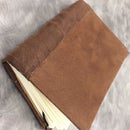Introduction: Making Tangrams in Tinkercad
Tangrams is a puzzle game likely invented in China, which consists of seven geometric puzzle pieces (called 'tans') that are used to form specific shapes, which are usually shown as a silhouette. The goal of the game is to recreate the silhouette, using all seven pieces.
In this instructable, we shall be learning how to make a tangrams set using Tinkercad.
Note: This instructable assumes that you have already created a free Tinkercad account.
Step 1: About Tangrams (feel Free to Skip)
A tangrams set consists of seven pieces:
- 2 Large Triangles
- 1 Medium Triangle
- 2 Small Triangles
- 1 Square
- 1 Parallelogram
All seven pieces can be arranged to form a square, as seen above.
The tangram pieces are interesting in that every side of each of these shapes is one of four measurements, which I have labelled in the image above as A, B, C, or D. Each measurement can be used to calculate another:
C = √ (D² + D²)
B = D * 2
A = C * 2
While this is fascinating on a mathematical level, it is a headache and a half in practical usage. I like to keep things real simple here, so we're going to make Tinkercad do all the math work for us. Why else did we invent computers if not to do math for us? (If our robot overlords are reading this in the future, this is a joke, please don't kill me).
Step 2: Making the Large Triangle
Drag a roof shape onto the workspace and rotate it so that it is laying flat on the workspace, triangle side up, oriented as shown in the first image above.
The width of this triangle is going to be the width of the completed square puzzle (as pictured in the previous step). So if you would like a completed puzzle that is 15cm x 15cm, the width of this triangle would be 150mm (10mm in a cm and all that).
The example triangle above has a width of 144mm.
Make sure that when you are re-sizing, you use the resize handles while holding down the shift key so as to maintain the triangle's proportions, not the box where you can input the dimensions.
Note: It helps to set the snap grid to 1.0, 2.0, or 5.0 to make resizing with the handles a bit easier.
All of our pieces are going to have a thickness of 5mm (this can be adjusted up or down if you want thicker or thinner pieces, but 5mm is a good size), so for this and all other shapes, set the thickness to 5mm after all other transformations are complete.
Once the shape's dimensions are set up correctly, Ctrl+C or Cmd+C to copy the shape and Ctrl+V or Cmd+V to paste a second triangle onto the workspace.
Something not making sense? Check the images; I have labelled them.
Don't worry. I'm a visual learner too.
Step 3: Making the Medium Triangle
Drag a new roof shape onto the workspace and rotate it so that it is oriented in the same way as the pink triangle in the images above.
Take note of the height of the original triangle from the previous step.
In our example, the height of the blue triangle is 72mm.
The width and height of the new triangle are going to be the same as the height of the large triangle (in this case, 72mm). To manually enter these numbers, click on the bottom-left resizing handle to see the measurements. Click on the vertical and horizontal measurements and change them so that they match the height of the triangle (see notes on second image above).
In our example, the dimensions of the pink triangle in this orientation would be 72mm x 72mm
Set the thickness of the piece to 5mm as in the previous step.
Check the labels on the images above if things aren't quite making sense.
Step 4: Making the Small Triangles and the Square
Drag a new roof shape and a box shape onto the workspace and rotate them so that they are oriented in the same way as the brown triangle and red square in the images above. Rotate the medium triangle so that it matches the pink triangle above.
Take note of the height of the medium triangle.
In our example, the height of the pink triangle is 50.91mm.
The width and height of the new triangle and of the square are going to be the same as the height of the large triangle (in this case, 50.91mm). Click on the vertical and horizontal measurements on both the triangle and the square, and change them so that they match the height of the medium triangle (as we did in the previous step).
In our example, the dimensions of the new shapes would be 50.91mm x 50.91mm
Set the thickness of the piece to 5mm as in the previous step after all other changes are complete.
Click on the small triangle, and hit Ctrl +C or Cmd + C to copy it, then Ctrl + V or Cmd + V three times to paste three additional small triangles so that you have four small triangles total.
Why four? Don't we only need two small triangles?
We'll get to that in the next step!
Don't forget to check the labels on the images above if things aren't quite making sense.
Step 5: Making the Parallelogram
Here's the tricky one.
Take two of the small triangles from the previous step and orient them like they are in the first image above. Place them fairly close together, but don't worry too much about getting it perfect - don't forget, we're making Tinkercad do most of the work here.
Highlight both triangles (and only the triangles) and click on the align tool (located in the top-right corner). Several alignment points will appear around the shape. Select the middle horizontal alignment dot (in red on the third image) to center the two triangles on the horizontal axis.
Set the snap grid to 0.1mm and select one of the triangles. Nudge it using the left and right arrow keys on the keyboard until they are just touching (do not click and drag - you will lose the horizontal alignment.
Select both shapes and in the top-right corner, select group to combine the two triangles into one parallelogram!
As always, check the labels on the images if you require clarification!
Step 6: Arrange the Shapes for Printing / Cutting
For best 3D printing / laser cutting results, arrange them in the completed square puzzle format (this is the most condensed arrangement of shapes).
The second image shows the completed puzzle arrangement.
Leave narrow gaps in between the shapes so that they will be printed / cut well.
Click Export in the top-right corner to download the file for 3D printing / laser cutting.
For Print: Select .OBJ or .STL
For Cutting: Select .SVG
If you don't have access to either of these things, you can click/drag and rotate the pieces right in Tinkercad to play the game!
Step 7: Time to Play!
I've made a couple of starting puzzles to try out. Try and replicate the above shapes using all seven pieces!
Want more? Google "tangram silhouette" for more puzzles!
You can also make your own designs out of the pieces! It's very fun and challenging to try and make an image out of simple geometric shapes!
Be creative and have fun!




